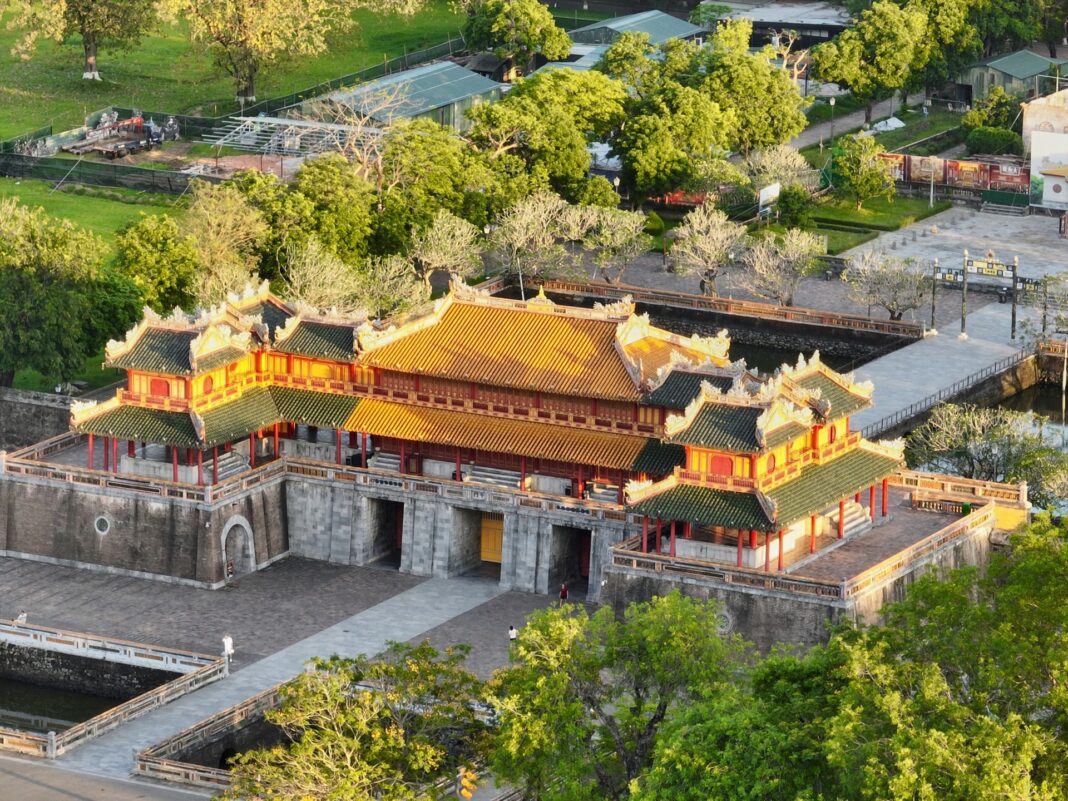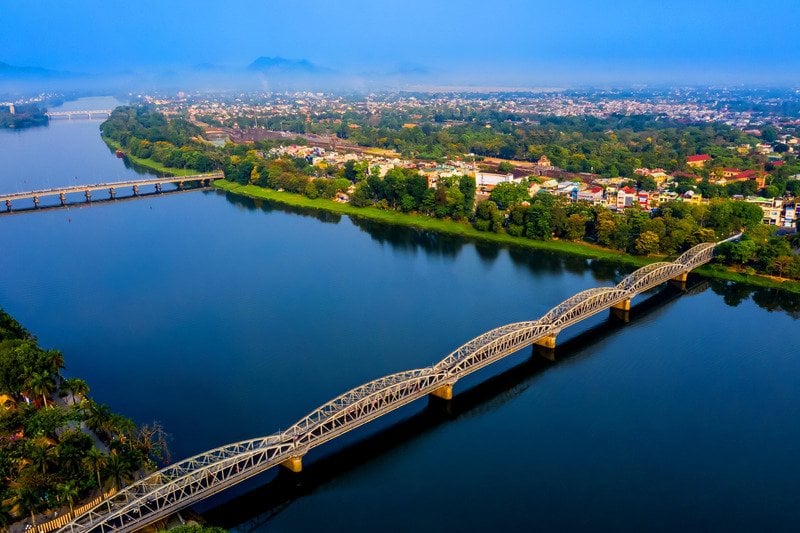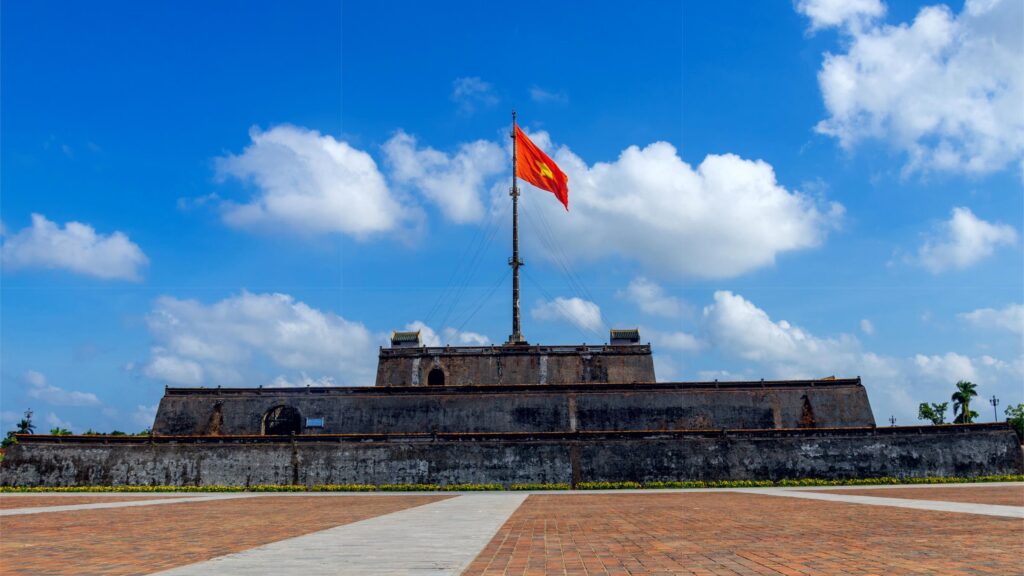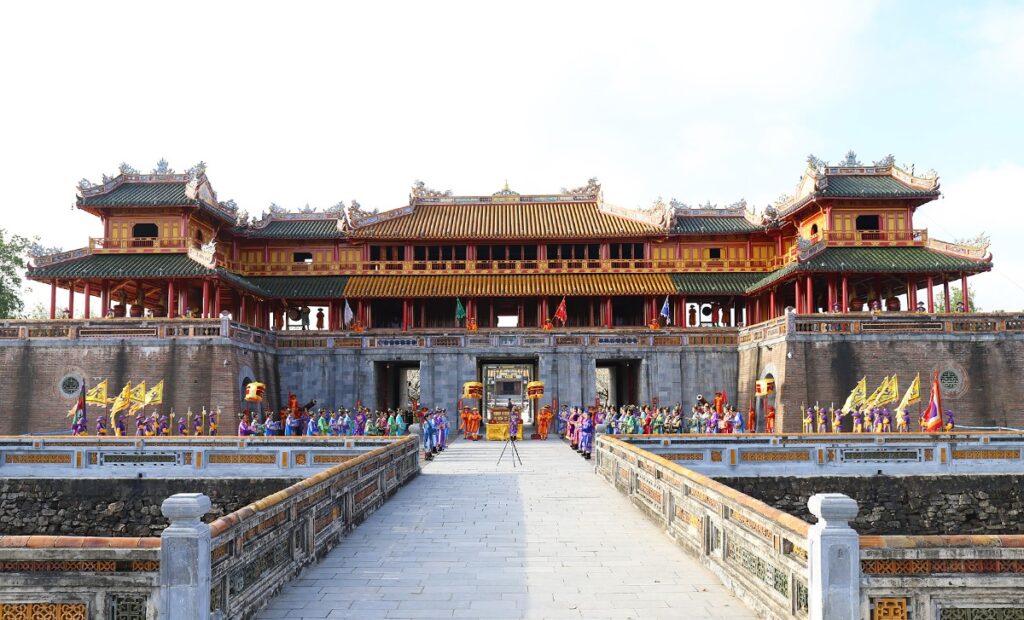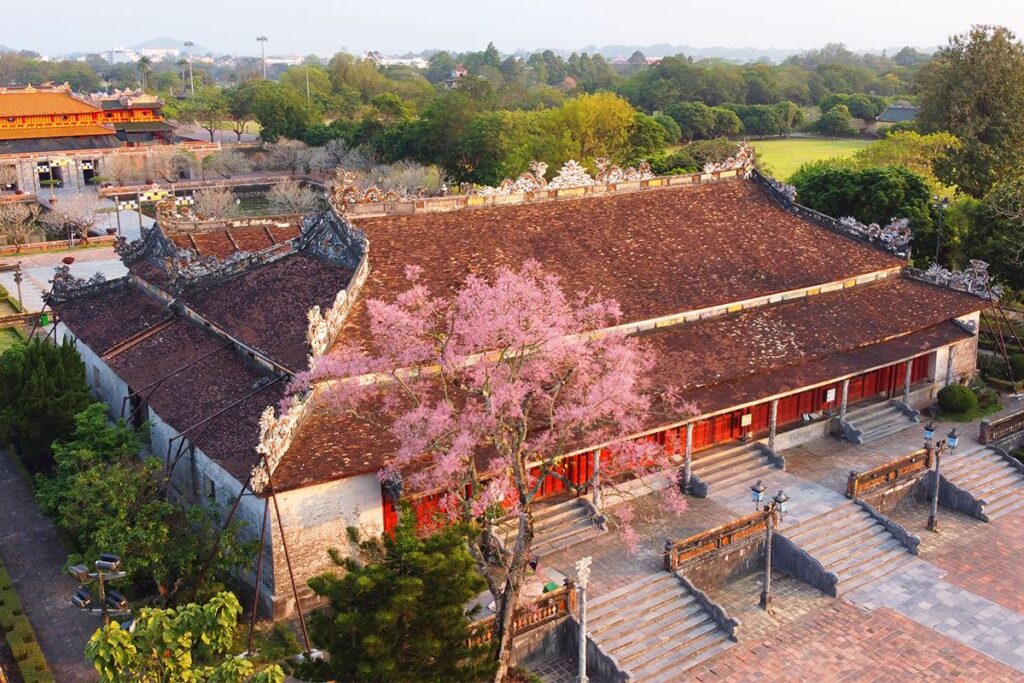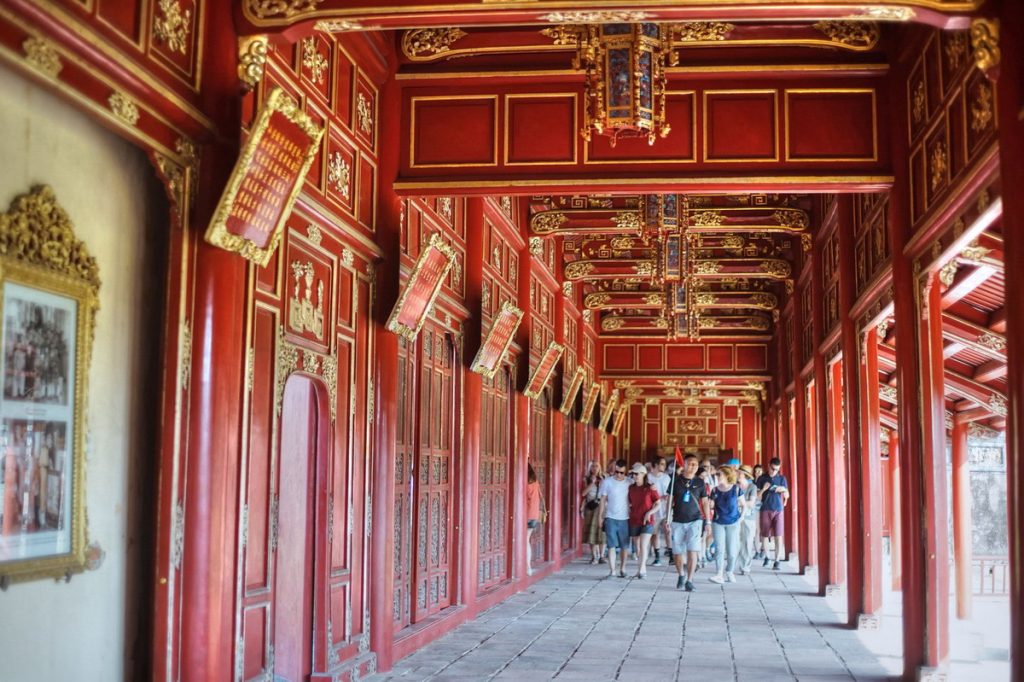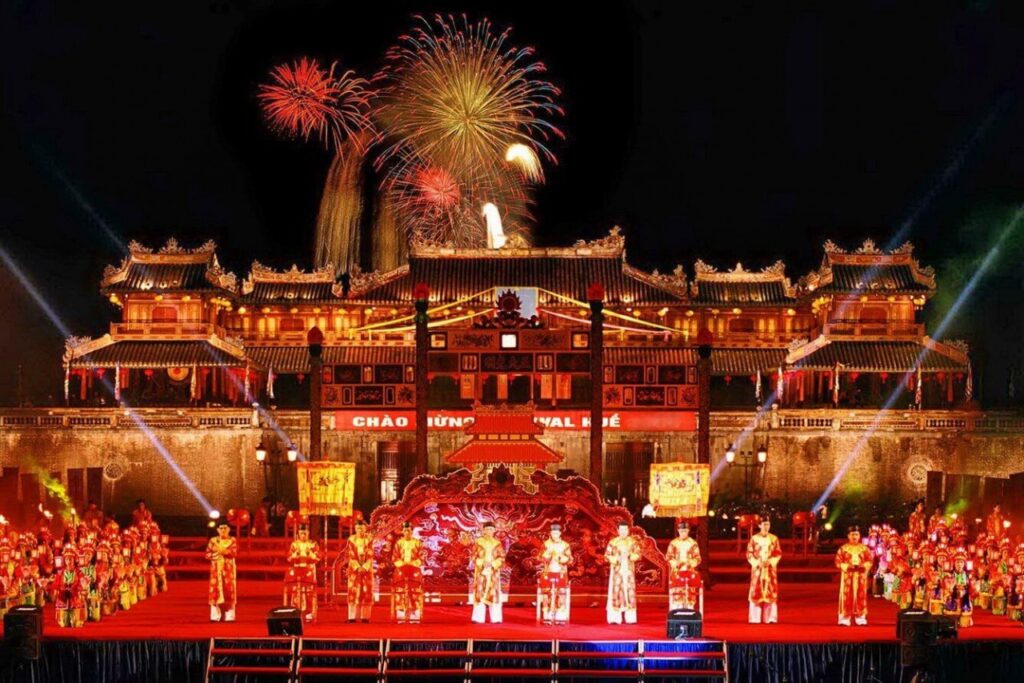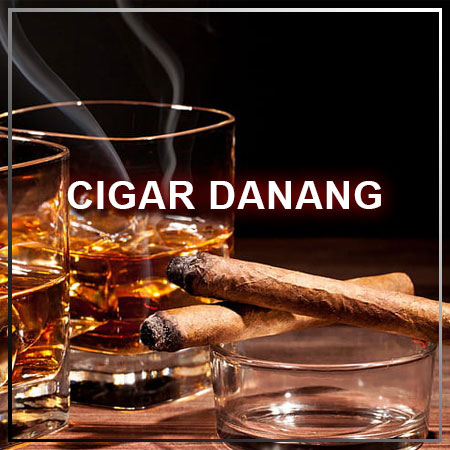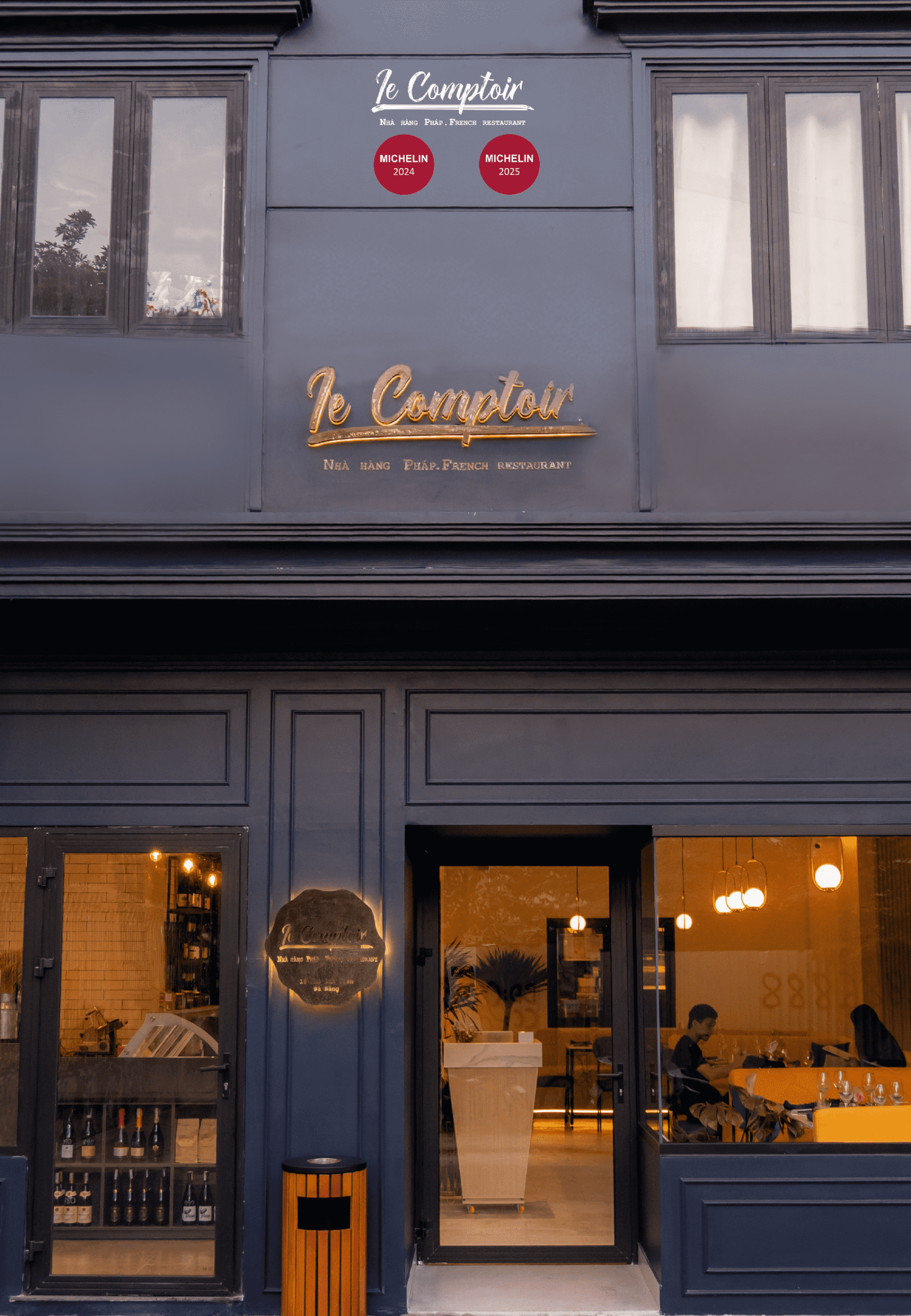Suppose you have already experienced the beautiful scenery and buzzing nightlife of Da Nang. Why not take a break from the bustling and hustling to appreciate the serene beauty of the ancient city of Hue for a bit? Specifically, the Imperial City of Hue is a must-see destination.
Hue, nestled along the banks of the Perfume River in Central Vietnam, boasts a rich historical background steeped in the monarchical majesty and cultural significance of the Nguyen Dynasty. This ancient city is not only famous for rich rustic specialties such as mussel rice, Hue beef noodle soup, steamed shrimp rice cake, and so on., but is also known for its architecture bearing the mark of Vietnamese culture, art, and philosophy during more than a century of the Nguyen Dynasty. Among the impressive and massive constructions, you cannot miss the UNESCO-recognized destination, the Imperial City of Hue, when you visit this city for the first time. Let’s explore this well-known ancient site with us.
The Imperial City of Hue
The Imperial City of Hue was first constructed in 1803 with 520 hectares after Gia Long, the emperor and founder of the Nguyen dynasty, took the throne. The Citadel Palace is located in a poetic area along the Perfume River, between two dunes, Hen Dune and Da Vien Dune, symbolizing an Asian spirit “dragon on the left, tiger on the right” protecting the citadel and bringing vitality to the dynasty. There are a total of ten doors on foot to enter the complex. When you go inside, you will come across nine bronze cannons separated into two sides. One side includes four cannons symbolizing four seasons in a year, and the rest of the other side implies five basic elements, Wood, Fire, Earth, Metal, and Water, related to feng shui issues of Oriental belief.
In terms of overall design, the Imperial City of Hue is divided into three main areas that are enclosed by three rectangular walls interlocked together. The exterior wall is known as Kinh Thanh (Capital Citadel), then the inner one is called Hoang Thanh (Imperial Citadel), and Forbidden Citadel or Tu Cam Thanh is the last wall that can be found inside the other two walls. It is interesting to note that all the architecture in the Imperial Citadel and Forbidden Citadel is oriented towards the South. According to East Asia philosophy, if the emperor wants to rule a peaceful and prosperous country, he should look toward the South, which receives a lot of sunlight and boasts a redundant energy source.
In the Imperial Citadel, the entire palace system is arranged on a symmetrical axis, in which the middle axis is arranged with buildings only for the emperor. The constructions on both sides are closely distributed according to each area, complying with the theory that “males on the left, females on the right” originates from the Oriental principle of yang and yin. These two elements are not mutually excluded but create favorable conditions for each other’s existence. Therefore, this will bring the balance supporting the prosperous dynasty. On both sides of the Imperial Citadel’s vertical axis, there are shrines or palaces for emperors to work as well as princes to study and entertain. Surrounding these areas are large and small lakes, flower gardens, stone bridges, and perennial trees that provide shade all year round.
Ky Dai (Stage of Flag)
Before passing through the Ngo Mon Gate, let’s admire the majestic beauty of Ky Dai (Stage of Flag), which was once the place where the royal flag was hung, as well as where soldiers guarded the Imperial City. Today, Ky Dai is a place to organize festivals or display fireworks to welcome the New Year in Hue.
The architecture consists of three stages, implying three elements of the philosophy of Heaven, Earth, and Humanity. Similar to Yin and Yang’s theory, these three factors also promote the balance and close connection of nature and humanity in the universe. Therefore, an emperor who wants to rule the country successfully must be supported by favorable conditions of nature, as well as the consensus of the people. Ky Dai was constructed in 1807 and has undergone several renovations to reach its present form. It is one of the most impressive sights in the Imperial City that you should not miss. It marks many significant historical events for the ancient city and Vietnamese people.
Ngo Mon Gate
Ngo Mon Gate is the primary southern entrance of the Imperial Citadel. It was constructed during the reign of Emperor Minh Mang in 1833. The name is derived from the gate’s orientation in the southern direction, which, in East Asian philosophy, represents the sun. In the beliefs of East Asian people, the sun symbolizes the supreme power of the emperor. Furthermore, the name also signifies the time of the day when the sun emits the most light and heat (at noon), further underscoring its symbolic significance.
This place often held military parade ceremonies, Truyen Lo ceremonies to honor talented graduates, and Ban Soc festivals which were calendar-distributing ceremonies hosted periodically at the end of the lunar year during the Nguyen Dynasty. Even to this day, Ban Soc festivals continue to be celebrated in Ngo Mon Gate as one of the exciting activities of the annual Hue Festival.
Thai Hoa Palace
Thai Hoa Palace is the most important architectural work in the Imperial City of the Nguyen Dynasty. It is the place where special ceremonies and royal meetings take place with the participation of the emperor, royal relatives, and ministers. The name Thai Hoa comes from the concept of balancing yin and yang to bring harmony and peace to the country.
Thai Hoa Palace is an architectural masterpiece completed in 1805. It stands out due to its unique style, which features a double house architecture with two roofs on one foundation. The Thai Hoa Palace consists of a front hall and a behind hall, which are connected. The facade comprises seven compartments and two wings. The structural frame system of the palace is made of ironwood and brick. Besides its grand scale, magnificent architecture, and sophisticated decoration, the most notable feature of the Thai Hoa Palace is the dragon image, the symbol of the Monarch, and the focal theme of the palace.
The Forbidden Citadel
The Forbidden Citadel, located behind the Thai Hoa Palace, was the center only for the Nguyen Dynasty’s royal family. It was built in 1804 with the original name “Cung Thanh” and is the third citadel in the complex. During the reign of Emperor Minh Mang in 1822, it was renamed “Tu Cam Thanh,” which means “The Forbidden Citadel.”
As a result of wars, only a handful of historical sites are still preserved in the Forbidden Citadel, such as the corridor leading to the main area. However, it does not diminish the excitement of your trip with the rental service for ancient costumes such as Ao Dai, Nhat Binh, and others at affordable prices to help you capture your memorable moments with your loved ones.
Performances of the cultural heritage recognized by UNESCO
Last but not least, for a perfect trip to Hue, we recommend visiting in the spring and summer when the Hue Festival takes place. These seasons allow you to witness the Imperial City of Hue in its majestic and splendid appearance and enjoy the cultural heritage recognized by UNESCO, Nha Nhac (Hue royal court music) with many impressive performances.
With sufficient information about the Imperial City we offer, we hope you will have a profound glimpse into its intricate architecture and symbolic significance. Therefore, do not hesitate to take this journey of discovery that promises to enrich your understanding of Vietnam’s heritage and leave you with memories to cherish for a lifetime in Hue.




